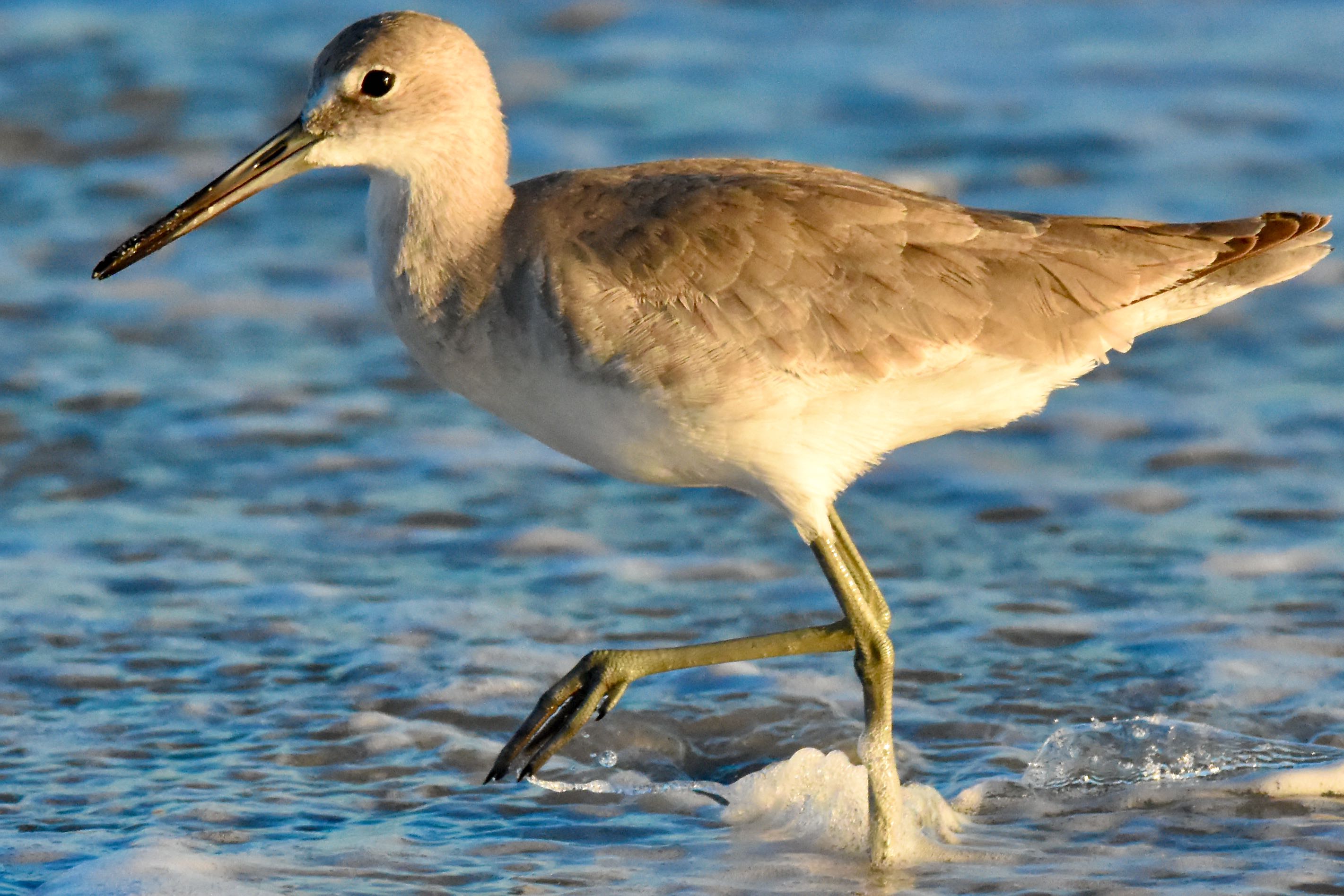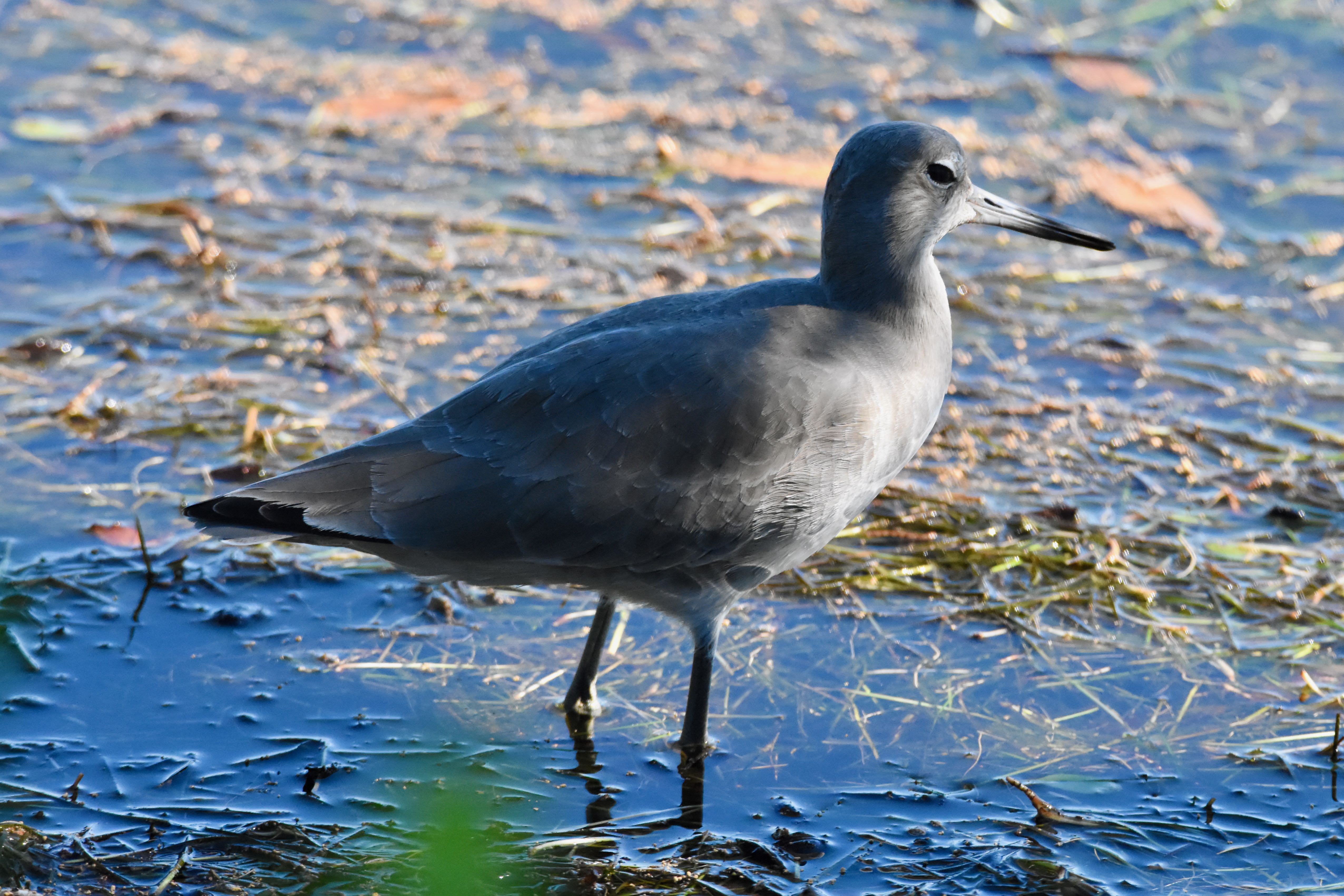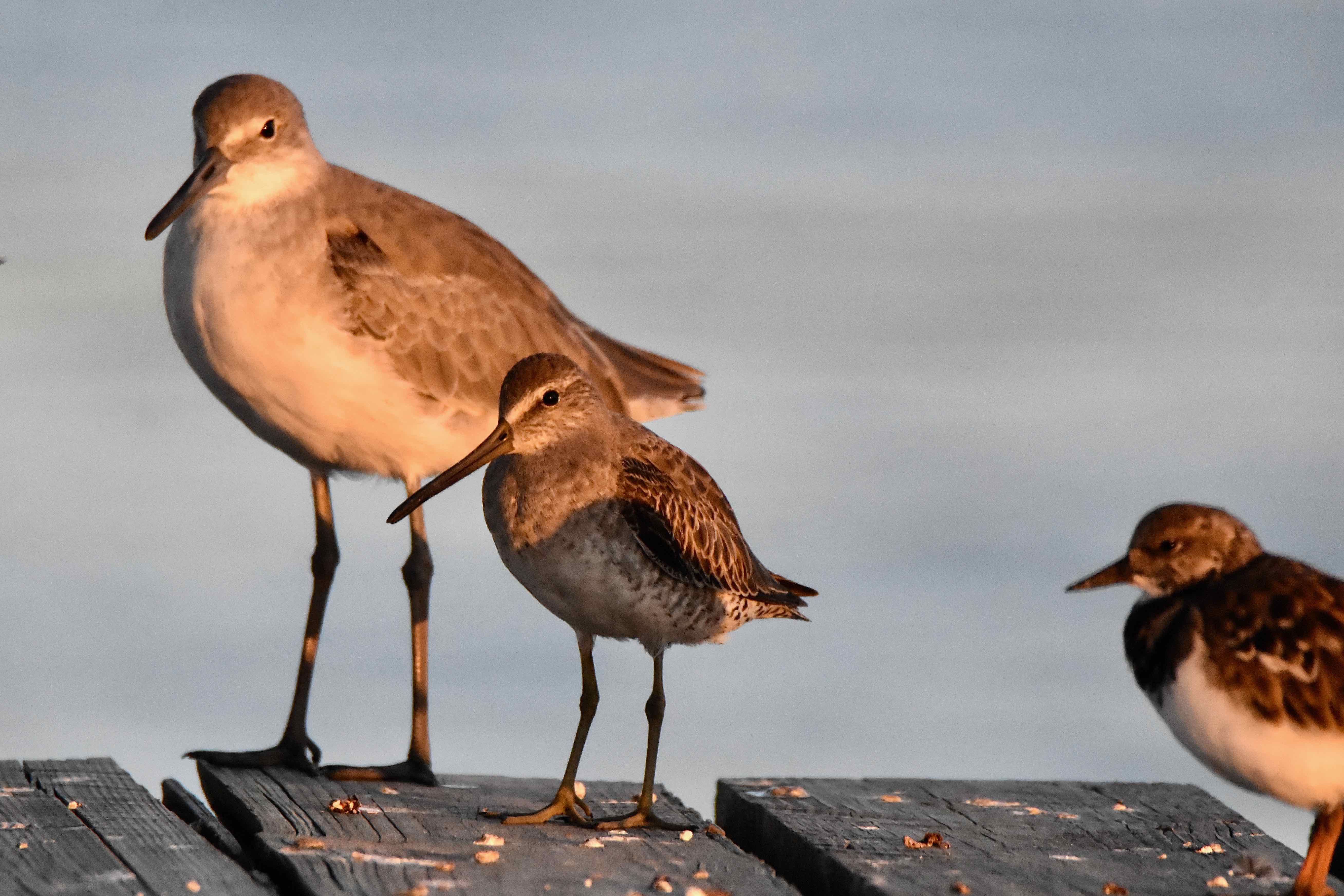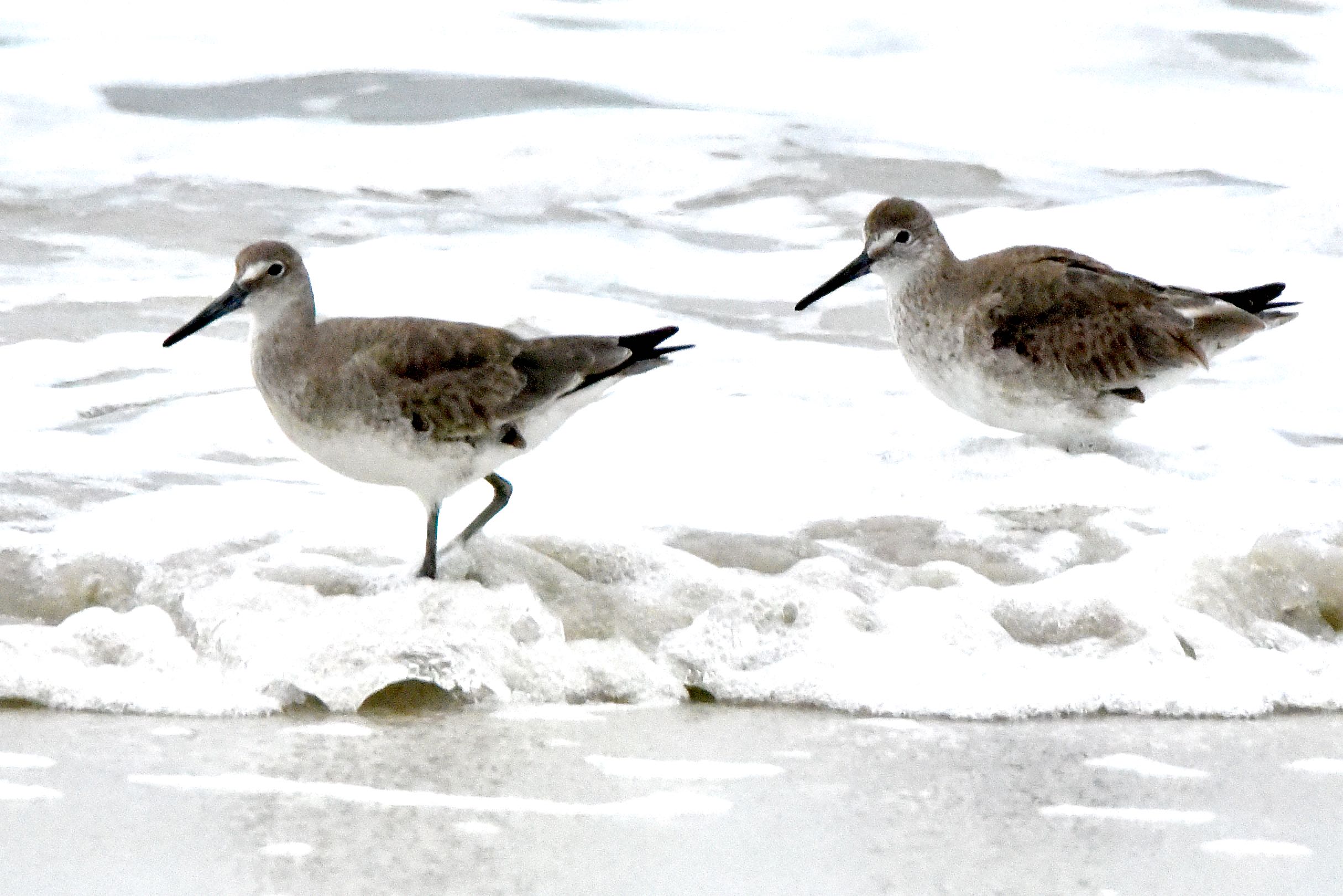
Willet, photographed at Bowman's Beach, Sanibel, Lee County, in October 2016.
Most sandpipers tend to be small to average size birds. The willet, Tringa semipalmata, is one of the exceptions. It is among the larger members of the family.
Its body can be 17 inches long, with a wingspan that can approach 27 inches. It has long legs and a long, relatively stout bill. To get some appreciation for its size, we included a photo below of a willet standing next to another member of the sandpiper family, the short-billed dowitcher. Also in the photo, another sandpiper, the ruddy turnstone. The willet towers.
Willets are both winter visitors to Florida and year-round residents. There are actually two varieties of willets separated by geography — a western bird that spends its summers in the Rocky Mountains and northern plains of Canada and the United States, and an eastern bird that breeds along the Atlantic coast from Nova Scotia and Canada's Maritime southward to the islands off Veneuzuela. Both varieties can be found in Florida in winter, but only the eastern, scientifically known as C s semipalmatus, spends the summer here.
In summer, willets are a mottled brown; in the cooler months, they taken on a dull gray or brown look. Throughout the year, they do have black-and-white bars on each wing that they flash when in flight. Greater yellowleg sandpipers are similar in looks to the willet's summer phase, but they are smaller, have thinner bills and have those namesake bright yellow legs to the willet's washed out green. The willet in its toned-down winter look isn't even close to the yellowlegs, however.
They hunt for food by probing the ground with their bill, using touch to find a meal as much as they do sight. Their menu includes small crabs, clams, worms and snails. Western willets summer well inland, along marshes, wet prairies, ponds and fields; eastern willets, the ones we see year-round, prefer to nest near saltwater marshes, on barrier islands and beaches. Come winter, both varieties hang along the coasts.
In Florida, willets nest along both the Atlantic and Gulf coasts. Nests are rare along the Atlantic south of Merritt Island and the Canaveral Natonal Seashore until you get to the lower Keys. Nesting season in the Sunshine State runs from April through June.
Willets nest in small groups on the ground, sometimes on open beach but mostly in the grasses above the high-tide line where they can be concealed. The male begins the nest-making process by scratching out a small depression, hoping it will be suitable for his mate. If not, he continues the process until she's satisfied. The female will finish the job by lining the hole with grass.
Females will lay a clutch of as many as four eggs, with both parents taking turns incubating them. However, according to the Cornell Laboratory of Ornithology, only the male will sit on them at night. The eggs hatch after three weeks to a month, then spend a day or two in the nest before wandering out to explore their world. If a predator threatens the nest or offspring, the parents will feign injury to draw the attention of the would-be attacker and lure him away from the young. But they can also aggressively attack an intruder as well. Both parents teach their offspring what to eat. The mother, however, will leave the family a couple of weeks early, leaving the father to finish up the rearing.
James Audubon, of all people, noted how good willets and their offspring tasted. Hunting was once a major threat to this bird's existence. The Migratory Bird Treaty Act of 1919 made hunting willets and other birds illegal, but loss of habitat remains a threat to their existence.
Willets, like all sandpipers, are members of Scolopacidae.
Bowman's Beach, Sanibel



